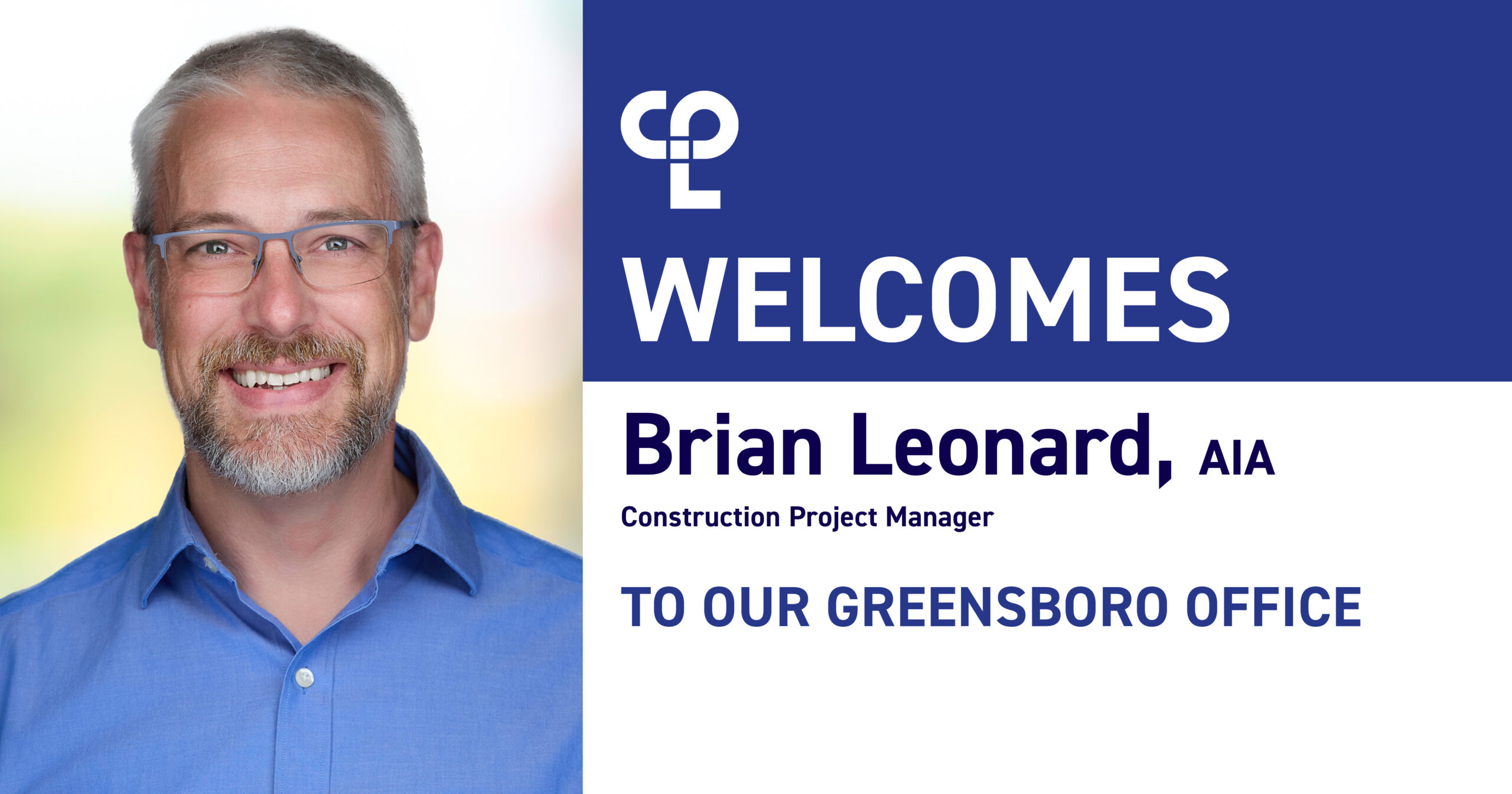Share This Story

GREENSBORO, NC — CPL, a full-service design firm serving public and private-sector clients for more than 49 years, is pleased to welcome Brian Leonard, AIA, to its office in Greensboro.
Leonard brings over two decades of experience in healthcare and education architecture to his new role as a Construction Project Manager. His experience includes overseeing multiple hospital projects, ensuring compliance with stringent quality and regulatory standards, and coordinating effectively between architects, consultants, and contractors. Leonard will leverage this technical expertise to lead the construction of high-quality healthcare facilities.
Before CPL, Leonard was a Senior Architectural Project Manager at BHM Architects. He earned a Bachelor of Architecture from the University of Oklahoma and is a licensed architect. Leonard is an active member of the American Institute of Architects (AIA).
